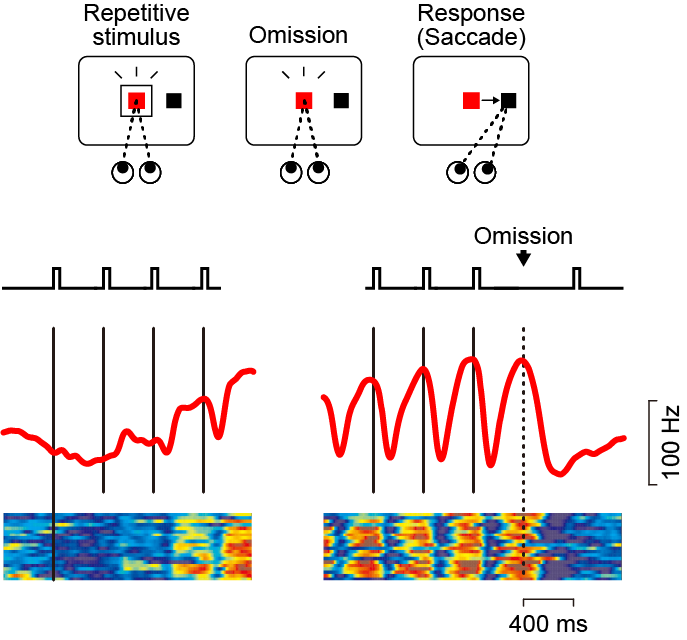Neural Mechanisms of Time Perception
Time information from hundreds of milliseconds to seconds is necessary in various scenes of daily life. When we wait at a traffic light, swing a bat, or feel the rhythm of music, we unconsciously measure time. Unlike tactile, visual, and auditory senses, there are no specialized receptors for measuring time, which means time perception is a pure sensation created in the brain. In our laboratory, we have trained monkeys to perform various behavioral tasks which require temporal information processing and analyzed neural activities in the cerebellum, striatum, thalamus, and frontal lobe. For example, the figure on the right shows the activity of a cerebellar neuron in monkeys trained to report the unexpected absence of periodic visual stimuli. To detect the “absence” of a stimulus, it is necessary to predict when the next stimulus will appear. Some neurons in the cerebellum have been shown to entrain their activity into the periodic stimulus, with activity peaking at the timing of the stimulus.

Achievements
- Okada KI et al. (2022) Nat Commun
- Matsuyama K, Tanaka M (2021) J Neurosci
- Kameda M et al. (2019) eLife
- Kunimatsu J et al. (2018) eLife
- Ohmae S et al. (2013) J Neurosci